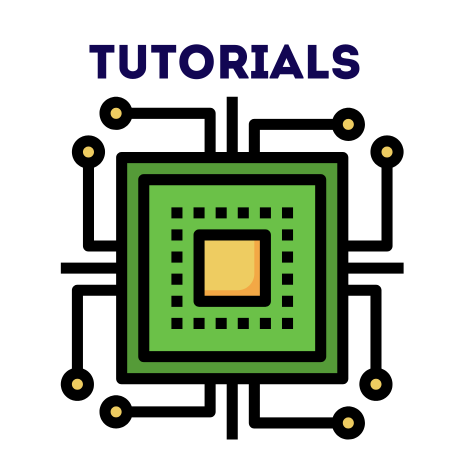The MOSFET (Metal-Oxide-Semiconductor Field-Effect Transistor) is a type of transistor widely used in electronic circuits for switching and amplification.
It is a voltage-controlled device that regulates current flow based on the input voltage.
What is a MOSFET?
A MOSFET is a field-effect transistor (FET) with three primary terminals:
- Gate (G): Controls the current flow.
- Source (S): The current enters through this terminal.
- Drain (D): The current exits through this terminal.
MOSFETs are widely used in digital and analog circuits due to their high-speed switching and low power consumption.
Working Principle of MOSFET
The working of a MOSFET relies on the electric field created by the voltage applied to the Gate terminal. This electric field controls the flow of current between the Source and Drain terminals.
- No Gate Voltage: The MOSFET is in the OFF state, and no current flows between the Source and Drain.
- Positive Gate Voltage: The MOSFET enters the ON state, allowing current to flow between the Source and Drain.
Types of MOSFETs
MOSFETs are classified into two main types based on their mode of operation:
1. Depletion Mode MOSFET
- Conducts current even when the Gate voltage is 0 (normally ON).
- Applying a reverse voltage to the Gate reduces the current flow.
2. Enhancement Mode MOSFET
- Does not conduct current when the Gate voltage is 0 (normally OFF).
- Applying a forward voltage to the Gate enhances the current flow.
Enhancement mode MOSFETs are more commonly used in modern electronics.
MOSFET Construction
A MOSFET consists of:
- Semiconductor Material:
- Typically made of silicon.
- Can be n-type or p-type depending on the doping.
- Metal-Oxide Layer:
- A thin insulating layer of silicon dioxide separates the Gate from the Source-Drain channel.
- Source and Drain Terminals:
- The terminals through which current enters and exits the MOSFET.
MOSFET Operation Modes
MOSFETs operate in three distinct modes:
1. Cut-Off Mode
- The MOSFET is OFF, and no current flows between the Drain and Source.
- Condition: Gate voltage (VGSV_{GS}) is less than the threshold voltage (VthV_{th}).
2. Linear (Ohmic) Mode
- The MOSFET acts as a variable resistor.
- Condition: VGS>VthV_{GS} > V_{th} and VDS<(VGS−Vth)V_{DS} < (V_{GS} – V_{th}).
3. Saturation Mode
- The MOSFET is fully ON, and the current flow is independent of VDSV_{DS}.
- Condition: VGS>VthV_{GS} > V_{th} and VDS≥(VGS−Vth)V_{DS} \geq (V_{GS} – V_{th}).
MOSFET Symbols
MOSFET Characteristics
- Threshold Voltage (VthV_{th}):
- The minimum Gate-to-Source voltage required to turn the MOSFET ON.
- Drain Current (IDI_D):
- The current flowing from Drain to Source, controlled by VGSV_{GS}.
- On-Resistance (RDS(on)R_{DS(on)}):
- The resistance between Drain and Source when the MOSFET is fully ON.
- Gate Capacitance:
- The capacitance formed between the Gate and Source/Drain terminals due to the oxide layer.
MOSFET Applications
1. Switching
- MOSFETs are used in power electronics for high-speed switching.
- Applications: DC-DC converters, motor controllers, and LED drivers.
2. Amplification
- Used in analog circuits to amplify signals.
- Applications: Audio amplifiers, RF circuits.
3. Logic Gates
- MOSFETs form the basis of CMOS logic gates used in microprocessors.
4. Voltage Regulators
- MOSFETs are used in linear and switching voltage regulators.
5. Power Supplies
- Used in inverters, UPS, and power management systems.
Advantages of MOSFETs
- High Input Impedance:
- Very low Gate current, making MOSFETs energy efficient.
- Fast Switching:
- Ideal for high-speed operations in digital and RF circuits.
- Low On-Resistance:
- Reduces power loss in switching applications.
- Compact Size:
- Suitable for miniaturized devices.
Disadvantages of MOSFETs
- Static Sensitivity:
- Can be damaged by electrostatic discharge (ESD).
- Temperature Dependency:
- Performance can degrade at high temperatures.
- Gate Drive Voltage:
- Requires proper Gate drive voltage for optimal operation.
Comparison Between MOSFET and BJT
| Feature | MOSFET | BJT |
|---|---|---|
| Control Mechanism | Voltage-controlled | Current-controlled |
| Switching Speed | Faster | Slower |
| Input Impedance | High | Low |
| Efficiency | Higher (less power loss) | Lower (more power loss) |
| Cost | More expensive | Less expensive |
MOSFET in Circuits
Basic MOSFET Switching Circuit
Components:
- N-Channel MOSFET
- Resistor
- Load (e.g., LED)
Working:
- Apply a voltage (VGSV_{GS}) to the Gate to turn the MOSFET ON, allowing current to flow through the load.
Tips for Using MOSFETs
- Proper Gate Drive:
- Use the recommended Gate voltage for efficient operation.
- Use Gate Resistors:
- Prevent oscillations during switching.
- Handle with Care:
- Protect against static electricity using anti-static precautions.
- Check Ratings:
- Ensure the MOSFET’s voltage and current ratings meet circuit requirements.
Conclusion
MOSFETs are versatile components that play a crucial role in modern electronics.
Their ability to operate as high-speed switches and amplifiers makes them indispensable in applications ranging from power supplies to digital circuits.

